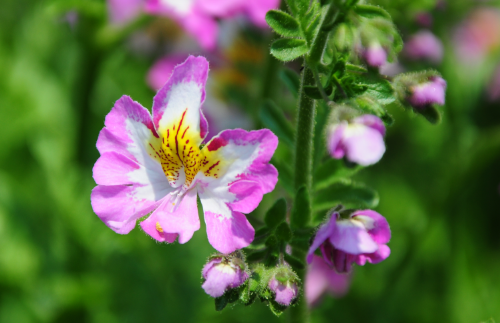Planting conditions of Morinda officinalis
Morinda officinalis is a dicotyledonous plant Rubiaceae plant, is a medicinal plant, the treatment of impotence spermatorrhea, uterine cold infertility, irregular menstruation, less abdominal cold pain, rheumatism arthralgia effect. Now it is cultivated in tropical or subtropical areas of our country, so what conditions do you need to grow Morinda officinalis? Let's get to know it.

1. Temperature requirement
Morinda officinalis likes a warm environment, afraid of cold, naturally distributed in the annual average temperature of about 21 degrees, the lowest not less than 19 degrees, the coldest monthly average temperature of about 13 degrees, not less than 9 degrees. When the temperature is below 0 degrees or in case of frost, it will cause the leaves to fall off, and in severe cases, frostbite or death. It is suitable to grow at 20-258 degrees, and the monthly average temperature of more than 25 degrees or less than 14 degrees will slow or stop growing.
2. Moisture requirements
Euphorbia officinalis originally grows in sparse mountains, dense forests and bushes, and often climbs on shrubs or tree trunks, so it has a certain adaptability to soil moisture. It is required to grow in an environment with plenty of rainfall and moist soil, but too much water will cause root rot and, in serious cases, death. So do a good job to choose areas with annual precipitation of about 1600 mm and humidity of about 80%, so as to grow and develop well.
3. Lighting requirements
Morinda officinalis is also adaptable to light, and wild resources often grow in hidden valley woodlands or areas with sufficient light, but during cultivation, shading measures should be taken in the seedling stage to avoid strong light harming the seedlings. The shade is 70%, 80%, 80%, and after the seedling is grown, a certain amount of light is required. At this time, the shade can be controlled at 30%, 70%, or full light, and it can grow and develop normally.
4. Soil requirements
Morinda officinalis is a deep root plant, which is suitable to grow in the soil with deep soil layer, loose soil, certain fertility and good drainage. The soil pH value is between 5.6and 6.The soil rich in organic matter is preferred. On the other hand, if the soil layer is thin and easy to consolidate, its root system will grow poorly, mostly in a twisted state, and the yield is lower, but if the soil fertility is high, it will cause its excessive growth, poor root growth and low yield.
The above is the introduction of the planting conditions of Morinda officinalis, hope to help you, want to know more related knowledge, please pay attention to us.
- Prev

How to plant Panax notoginseng
How to plant Panax notoginseng
- Next

Sowing and propagation of moth, butterfly and flower
How to sow and so on when the soil is ready, begin to sow, spread the prepared seeds on the soil slowly and evenly, and then sprinkle a layer of soil on these seeds. Because the seeds of the moth butterfly flower are relatively large, the thickness of the soil in the last step is larger, preferably above 3mm.
Related
- Fuxing push coffee new agricultural production and marketing class: lack of small-scale processing plants
- Jujube rice field leisure farm deep ploughing Yilan for five years to create a space for organic food and play
- Nongyu Farm-A trial of organic papaya for brave women with advanced technology
- Four points for attention in the prevention and control of diseases and insect pests of edible fungi
- How to add nutrient solution to Edible Fungi
- Is there any good way to control edible fungus mites?
- Open Inoculation Technology of Edible Fungi
- Is there any clever way to use fertilizer for edible fungus in winter?
- What agents are used to kill the pathogens of edible fungi in the mushroom shed?
- Rapid drying of Edible Fungi

